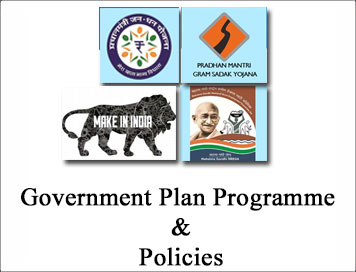(HOT) UPSC Current Affairs 2025 PDF
NEW! The Gist (NOV-2025) | E-BOOKS
Rurban Mission: Government Plan Programme Policies for UPSC Exam

Government Plan Programme Policies for UPSC Exam
::Rurban Mission::
Shyama Prasad Mukherji Rurban Mission (SPMRM) with an outlay of Rs. 5142.08 crores.
The Mission aims at development of rural growth clusters which have latent potential for growth, in all States and UTs, which would trigger overall development in the region. These clusters would be developed by provisioning of economic activities, developing skills & local entrepreneurship and providing infrastructure amenities. The Rurban Mission will thus develop a cluster of Smart Villages.
These clusters would be well delineated areas with planned layouts prepared following the planning norms (as laid down in the State Town and Country Planning Acts/similar Central or State statutes as may be applicable), which would be duly notified by the State/UTs. These plans would be finally integrated with the District Plans/Master Plans as the case may be.
The State Governments would identify the clusters in accordance with the Framework for Implementation prepared by the Ministry of Rural Development. The clusters will be geographically contiguous Gram Panchayats with a population of about 25000 to 50000 in plain and coastal areas and a population of 5000 to 15000 in desert, hilly or tribal areas. There would be a separate approach for selection of clusters in Tribal and Non-Tribal Districts. As far as practicable, clusters of village would follow administrative convergence units of Gram Panchayats.
For the selection of clusters, the Ministry of Rural Development is adopting a scientific process of cluster selection which involves an objective analysis at the District, Sub District and Village level, of the demography, economy, tourism and pilgrimage significance and transportation corridor impact. While the Ministry, following this analysis, would provide a suggestive list of sub districts to the State, the State Governments would then select the clusters following a set of indicated principles included in the Framework for Implementation.
The mission aims to create 300 such Rurban growth clusters over the next 3 years, across the country. The funding for Rurban Clusters will be through various schemes of the Government converged into the cluster. The SPMRM will provide an additional funding support of upto 30 percent of the project cost per cluster as Critical Gap Funding (CGF) as Central Share to enable development of such Rurban clusters.
To ensure an optimum level of development, fourteen components have been suggested as desirable for the cluster, which would include; Skill development training linked to economic activities, Agro Processing/Agri Services/Storage and Warehousing, Digital Literacy, Sanitation, Provision of piped water supply, Solid and liquid waste management, Village streets and drains, Street lights, Fully equipped mobile health unit, Upgrading school /higher education facilities, Inter-village road connectivity, Citizen Service Centres- for electronic delivery of citizen centric services/e-gram connectivity, Public transport., LPG gas connections.
The States would prepare Integrated Cluster Action Plans for Rurban Clusters, which would be comprehensive plan documents detailing out the strategy for the cluster, desired outcomes for the cluster under the mission, along with the resources to be converged under various Central Sector, Centrally Sponsored and State Sector schemes, and the Critical Gap Funding (CGF) required for the cluster.
In addition to the Critical Gap Funding, proactive steps have been taken to ensure the success of the mission with adequate budget provisions for supporting the State Government towards project development, capacity building and other institutional arrangements at the state level.
The Mission envisages institutional arrangements both at the State and Center to ensure smooth implementation of the Mission. The Mission also has an Innovation budget towards facilitating research, development and capacity building.
The scheme through development of rurban growth clusters aimed at catalyzing overall regional growth, would thus simultaneously benefit the rural as well as urban areas of the country, by achieving twin objectives of strengthening rural areas and de burdening the urban areas hence leading to balanced regional development and growth of the country.

